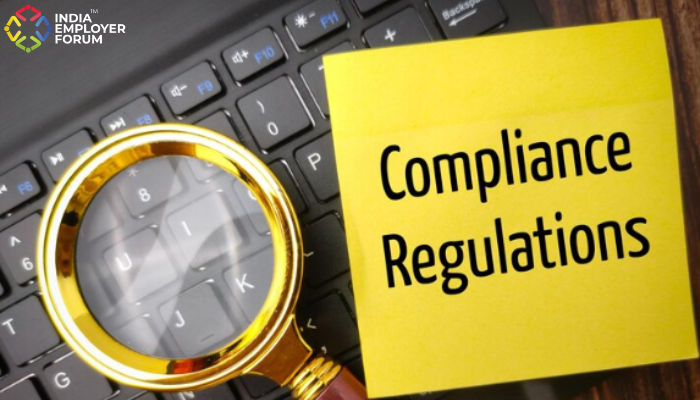Companies are particular about running efficient businesses. To this end, they often get the processes and procedures of their various departments reviewed. An HR audit examines the HR function of the company. This audit reveals the robustness of the HR function and points out areas which need to be tackled.
Companies may want HR audits covering a variety of concerns. For example, a company may order:
- An HR audit to find out whether the documentation has been organized properly. Are the documents filed correctly? Are there any misfilings? Are there any missing documents? This is the simplest and most basic process of HR audit.
- Businesses also have to comply with a host of regulations and laws. The very survival of a business depends on scrupulous compliance to these various laws. A comprehensive HR compliance audit assesses whether current HR policies and processes adhere to the various applicable laws. Any gaps that are noticed need to be resolved. This is a crucial audit as non-compliance with existing laws can lead to heavy financial consequences for the company in terms of government fines and even expensive and protracted court cases.
- A company at times may order specific functional audits. For example, an audit of its recruitment practices and whether these are in compliance with the industry practices. These are short and specific audits instead of a full HR audit.
- Strategic audit is a full HR audit. A company may want to get this done to know if its HR policies and practices are in sync with its overall business strategies.
- At other times, companies that have gone through extensive re-modelling, expansion, mergers, etc. need an HR audit to help them choose the right HR practices and processes post the changes.
Importance of HR Audit and why HR functions needs auditing
HR activities like hiring and recruitment policies and procedures, salaries and other employee benefits, reward schemes, performance evaluation and career planning, training and development, departure procedure namely termination of service and exit interviews, all come under the purview of a comprehensive HR audit. For example, a review of hiring practices more often than not uncovers inadequate documentation. Important forms from the point of view of legal compliance are not filled. This can lead to messy situations for the company. Again, very often personal files of the employees contain sketchy information and crucial details are missing. If the employee had been issued any disciplinary warnings, these are found to be not properly and consistently worded. Performance evaluations are found to be inaccurate and outdated during audits. It is in the interest of the employers to have accurate information in the personal files of the employees in case they have to defend themselves in future in a law suit.
Employee benefits that are regulated by law such as maternity and disability accommodation need to be audited from the legal compliance point as well.
HR audits can be undertaken in house or they can be outsourced to an external agency. In both cases, it is essential to determine the scope and objective of the audit, first and foremost.
The HR audit process has three stages. Stage one is actually the pre audit stage, in which company’s policies, HR manual, employee handbook and other reports that form the basis of the company’s HR function are thoroughly reviewed. Stage two is the on site evaluation of the company’s HR function. This is achieved by employing various tools such as questionnaires, interviews and formal discussions, observations and surveys to collate information from the company’s personnel. Stage three is the perusal of the company’s records. All HR records such as employee files, performance reviews, turnover statistics, any claims filed by the current or former employees against the company etc. are meticulously surveyed.
Once the data is collected, an HR audit checklist is put together. This is a widely used method in HR audits. In the checklist system, a list of every practice under the HR audit is prepared. Against each item, the actual practice followed by the company as well as defined practice is mentioned. The comparison of the two reveals the departure from the defined practice if any. On the basis of this assessment, a comprehensive HR audit report is prepared. Strengths are noted and areas of concern are flagged. This leads to the most important part of the audit that is, action plan for improvement. Implementation of the plan is entrusted to the employer. HR audits also devise a system for a continuous feed-back in an on-going manner. One significant question that comes up relates to the periodicity of the HR audits. It is prudent to conduct audit of documentation and files often, at least 2/3 times a year. Compliance audits can be done once every 2/3 years. If there has been a big change in legislation, there is a need for compliance audit immediately. Strategic audits need to be done once every 2-3 years to ensure everything is on track.
HR audits benefit companies greatly. One of the most important benefits is that it facilitates a happy relationship between the management and employees, which ultimately translates into greater success for the company. In the eternal tussle between reducing costs and keeping the employees happy, HR audits find the correct balance to keep the employer-employee relationship healthy.
These audits help the company in optimum utilization of its human resource, leading to increased productivity. They help identify issues that may prove to be toxic to a company’s overall health in the long run. A company can assess its position vis-a-vis its competitors after an HR audit. These audits perform due diligence for company’s shareholders and future investors thus helping them reflect on the risk factor before plunging into investment.




